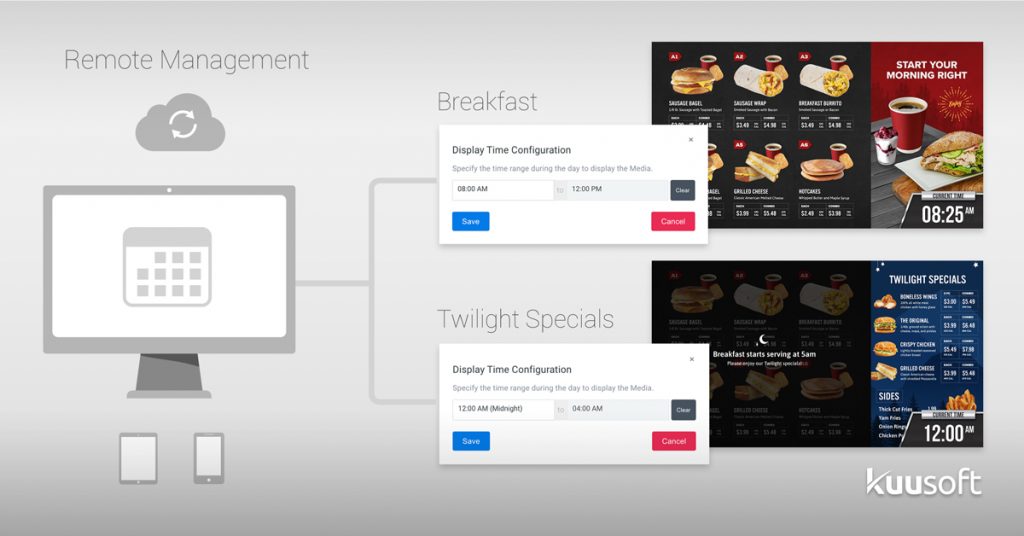
Running any business or offering customer-facing services requires marketing and advertising. Even if you have a fully booked business that functions through word-of-mouth marketing, you still need signage to inform your customers.
The problem arises when those signs, banners, and other marketing materials need to be updated. Changes to non-digital materials involve paper and plastic waste. In 2022, the U.S. used around 65 million metric tons of paper, of which a large portion originated from business marketing materials and displays.
In this article, let’s take a closer look at how using digital signage can be an eco-friendlier and strategic choice to paper signage.
Digital Signage Overview
Most likely you already interacted with digital displays in the past. Ordering food at the drive-thru or looking at the updated schedule of upcoming movies at the movie theater, all involve digital signage.

In essence, digital signage offers an eco-friendlier choice for marketing and advertising than the traditional substantial amounts of paper used to communicate and promote product offerings.
How Does Digital Signage Help Businesses?
Moving from paper to digital signage mitigates the negative environmental effects of paper overuse. Here are 4 ways that switching to digital signage from traditional paper signage helps businesses make more eco-friendly decisions:
1. Lowers Paper Waste
Paper and paperboard account for roughly 26% of all landfill waste. The content printed on large amounts of paper for non-digital signage, marketing materials, and similar items, can all be brought to new heights and shown on digital displays.
Digital signage reduces the need for such resource-heavy materials. The main reason is that all content can be updated online without needing additional paper. So, when deciding to go digital, you are shifting your operations from a consumption standpoint to a more sustainable practice.
2. Requires Lower Energy Use
Carbon footprint matters. As a business, you have the choice to make more eco-friendly decisions and help your customers to do the same. Instead of relying on paper-based products that require: harvesting trees, turning them into pulp, and shipping that paper, you can opt in for something digital.

When using digital signage, with the help of cloud software all the content will be displayed on a screen for your audience to read. The power use stems from the electricity needed to update and run that display. The average display screen uses 620, 000 watt-hours a year, which is much less than a refrigerator, water heater, and air conditioner.
3. Decreases Water Reliance
Studies show that one office employee prints around 10,000 sheets of paper a year. For that amount of paper, 50,000 gallons of water is needed. Digital signage decreases the need to use this an essential resource.
So, with digital signs, you can ensure you are meeting water conservation goals. Meeting such goals can help your business build trust and credibility with customers and investors through internal and external marketing.
4. Easy to Change
Think about how many steps it takes to update a paper-based display. Even something as simple as changing the font is an additional expense, printing time, and delivery vehicles.

Digital displays offer the flexibility to be adjusted anytime. They can also be accessed and updated remotely, saving your team valuable time and reducing the carbon emissions associated with the transportation and production of traditional paper signage.
Final Thoughts
Want to reduce your reliance on wasteful paper and cardboard resources? Digital signage can help you. Digital signage can support you in making more sustainable and eco-friendly decisions. It allows your business to successfully advertise crucial information in an easy-to-update and eye-catching format that attracts your target audience.
You can learn more about NexSigns’ Digital Signage solution and connect with us on Facebook, LinkedIn, X, and YouTube to get the latest info on digital signage!





